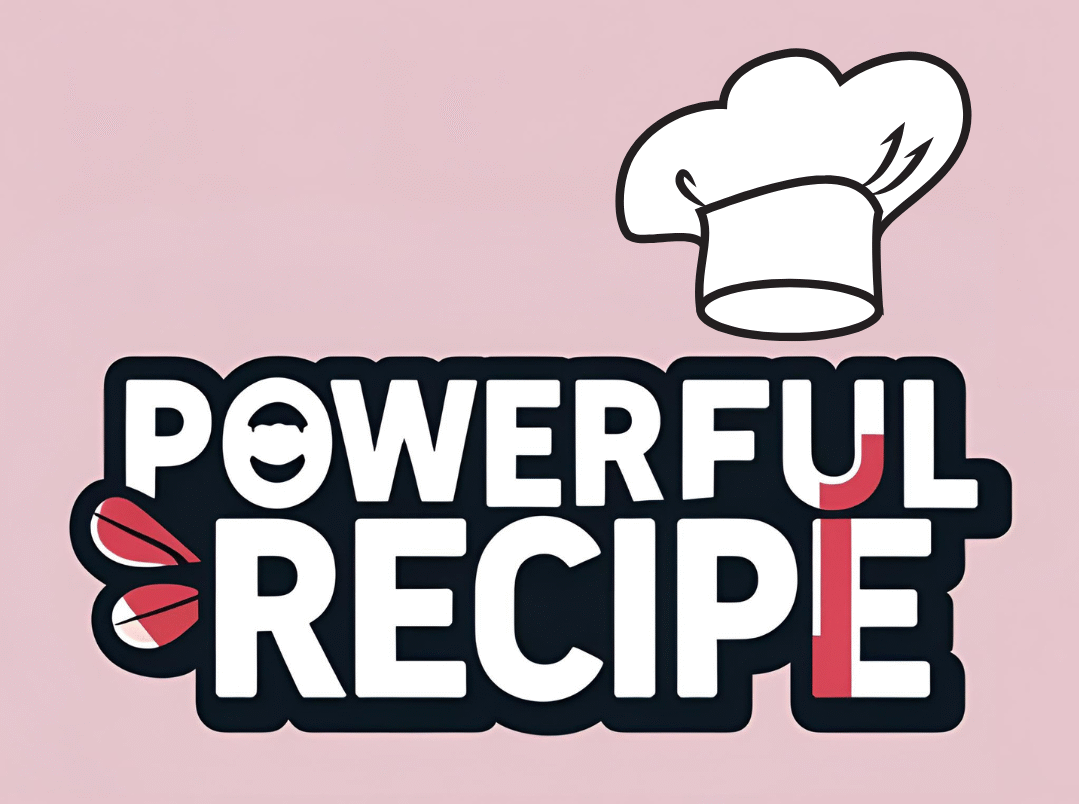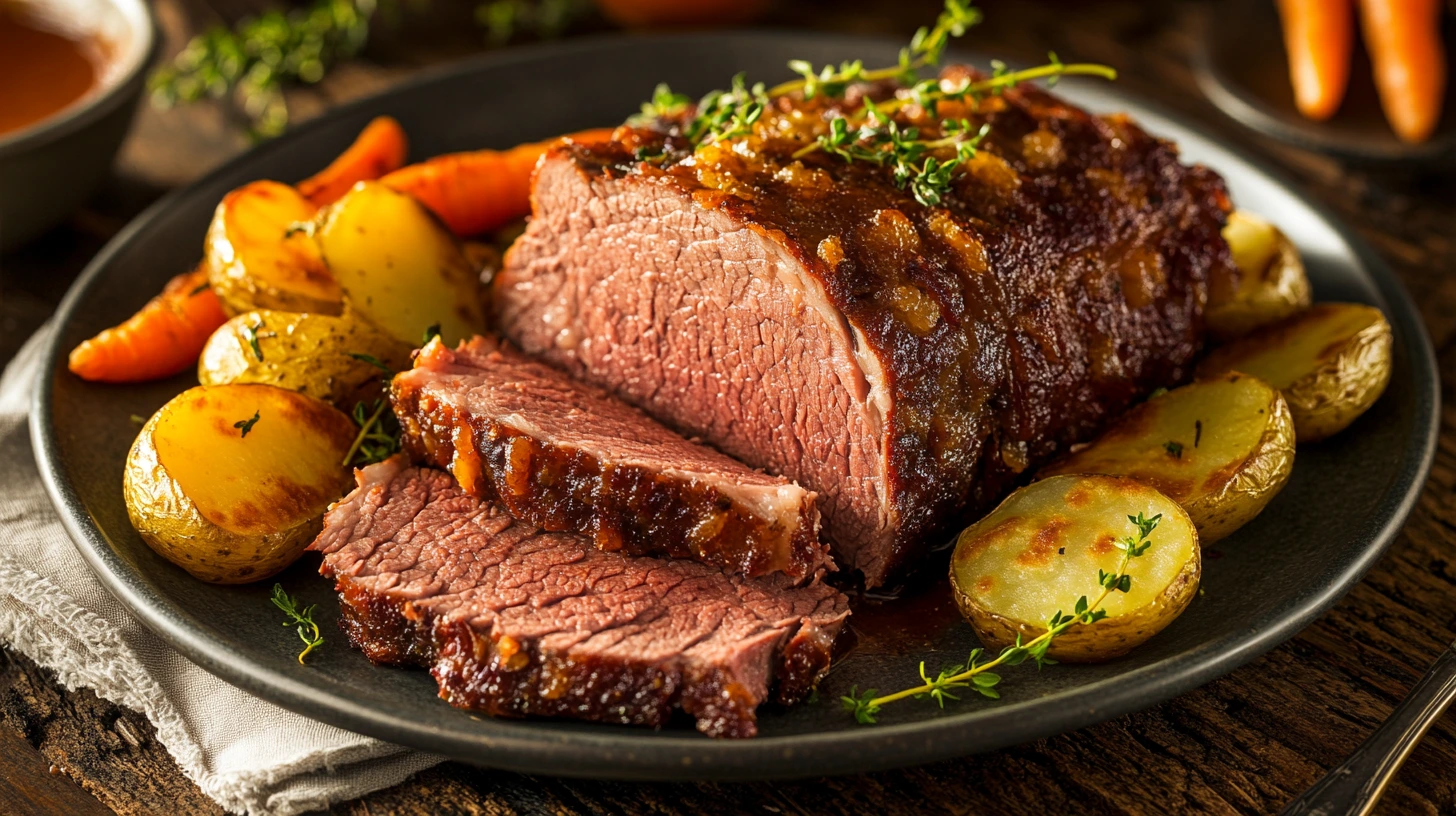Baked corned beef and cabbage is a flavorful and hearty dish with deep roots in Irish-American cuisine. While the traditional method involves boiling corned beef, baking it in the oven creates a richer, more intense flavor with a delicious caramelized crust. This guide will walk you through everything you need to know—from selecting the best ingredients to perfecting the baking process—to help you make the most delicious corned beef and cabbage at home.
Whether you’re preparing this dish for St. Patrick’s Day, a family gathering, or simply a comforting meal, this step-by-step guide will ensure that your baked corned beef is tender, juicy, and packed with flavor.
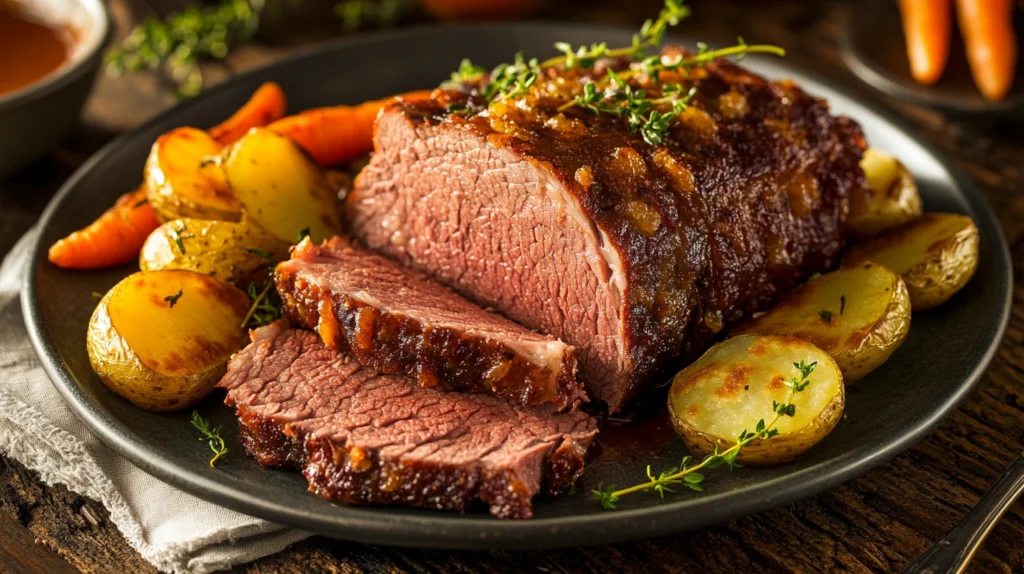
Why Baked Corned Beef and cabbage Instead of Boiling?
Many people associate corned beef with a boiled dinner, where the beef is simmered in water with cabbage, potatoes, and carrots. While this method is traditional, it can sometimes leave the meat bland and overly soft. Baking, on the other hand, helps retain flavor and texture, producing a beautifully caramelized crust that enhances every bite.
Here are the key benefits of baking corned beef instead of boiling:
Enhanced Flavor: Baking locks in the seasoning and juices, leading to a more concentrated, rich taste.
Better Texture: The beef stays firm yet tender, rather than becoming too soft or mushy.
Crispy, Glazed Exterior: Baking allows for glazes or spice rubs to create a delicious crust on the outside.
No Water Dilution: Boiling can wash away the seasoning, while baking keeps all the spices intact.
If you’re looking for a next-level corned beef experience, baking is the way to go!
A Brief History of Baked Corned Beef and Cabbage
Corned beef and cabbage is often associated with Irish culture, but its history is a little more complex. While beef was not a staple in Ireland due to its high cost, Irish immigrants in America found corned beef to be an affordable and flavorful alternative to pork. They paired it with cabbage—a cheap and readily available vegetable—creating the dish we now recognize as “Irish-American corned beef and cabbage.”
Fun Fact: In Ireland, a more traditional dish would be bacon and cabbage rather than corned beef!
Ingredients for Baked Corned Beef and Cabbage
A great dish starts with great ingredients! To make the best baked corned beef and cabbage, you need to choose the right cut of meat, season it properly, and pair it with flavorful vegetables. Below, we’ll break down each component of this classic meal.
Choosing the Best Baked Corned Beef and Cabbage Brisket
Corned beef is made from brisket, a tough cut of meat that becomes tender after slow cooking. When buying corned beef, you’ll typically see two types:
1. Flat Cut Brisket (Recommended for Baking!)
More uniform in shape, making it easier to slice
Has a thin layer of fat that keeps it moist Less fatty than the point cut
2. Point Cut Brisket (More Flavorful but Fatty)
Thicker and has more marbling, which means more flavor
Can be a little harder to slice neatly
Better for shredding rather than slicing
💡 Pro Tip: If you want a neat, sliceable roast, go with flat cut. If you prefer more fat and flavor, point cut is a great option.
Essential Spices and Seasonings
Most store-bought corned beef comes with a seasoning packet, but adding extra spices enhances the flavor even more. Here’s what you need:
- Dijon Mustard or Whole-Grain Mustard – Helps create a flavorful crust
- Brown Sugar – Balances the salty brine with a hint of sweetness
- Black Pepper – Adds a slight heat
- Garlic Powder – Enhances depth of flavor
- Bay Leaves – Brings out the traditional corned beef taste
- Apple Cider Vinegar (Optional) – Helps tenderize the meat
💡 Pro Tip: If your brisket doesn’t come with a spice packet, you can make your own using:
Vegetables That Pair Well with Baked Corned Beef and Cabbage
A traditional corned beef and cabbage meal wouldn’t be complete without the perfect side vegetables!
🥬 Cabbage: The star vegetable—absorbs flavors beautifully when roasted
🥕 Carrots: Adds natural sweetness and color
🥔 Potatoes: Use baby potatoes or Yukon Gold for a buttery texture
🧅 Onions: Adds depth of flavor and caramelizes beautifully when roasted
💡 Pro Tip: Instead of boiling the vegetables (which can make them mushy), roasting them in the oven will bring out their natural sweetness and texture.
Final Ingredient Checklist
Here’s everything you need for baked corned beef and cabbage:
For the Baked Corned Beef and cabbage:
1 (3-4 lb) corned beef brisket (flat or point cut)
2 tbsp Dijon mustard
2 tbsp brown sugar
1 tsp black pepper
½ cup beef broth or water
1 tbsp apple cider vinegar (optional)
For the Vegetables:
1 small head green cabbage, cut into wedges
4 medium carrots, peeled and cut into large chunks
6-8 baby potatoes or 3 large potatoes, quartered
1 large onion, cut into wedges
2 tbsp olive oil
Salt and pepper to taste
½ tsp garlic powder
½ tsp dried thyme or rosemary (optional)
Step-by-Step Guide to Baking Baked Corned Beef and Cabbage
Now that we have all the ingredients, it’s time to prepare and bake the corned beef for maximum flavor and tenderness. Follow these simple steps to ensure your corned beef turns out juicy, tender, and packed with flavor.
Preparing the Baked Corned Beef and Cabbage for Baking
1️⃣ Preheat the Oven – Set your oven to 325°F (163°C). A lower temperature ensures a slow, even cook.
2️⃣ Rinse the Baked Corned Beef and Cabbage – Take the brisket out of the package and rinse it under cold water to remove excess brine. This step prevents the meat from being overly salty.
3️⃣ Pat it Dry – Use paper towels to remove any excess moisture. A dry surface allows the mustard and seasonings to stick better.
4️⃣ Trim Excess Fat (Optional) – Corned beef comes with a fat cap on one side. Leaving some fat on helps retain moisture, but you can trim off excess thick layers if desired.
Seasoning the Corned Beef
1️⃣ Place the brisket fat-side up on a large sheet of aluminum foil inside a roasting pan.
2️⃣ Spread the Mustard & Brown Sugar – Mix 2 tbsp Dijon mustard and 2 tbsp brown sugar, then spread it evenly over the top of the brisket. This helps create a delicious caramelized crust.
3️⃣ Add the Seasoning Packet or Homemade Spices – Sprinkle the included seasoning packet or your homemade spice mix (mustard seeds, coriander, black peppercorns, etc.) evenly over the meat.
💡 Pro Tip: Mustard acts as a “glue” to hold the spices onto the meat while enhancing flavor.
Wrapping and Baking the Corned Beef
1️⃣ Wrap in Foil – Tightly wrap the corned beef in heavy-duty aluminum foil to trap moisture and steam, preventing it from drying out.
2️⃣ Add Liquid to the Pan – Pour ½ cup beef broth or water into the bottom of the roasting pan to create steam inside the oven. You can also add 1 tbsp apple cider vinegar for extra tenderness.
3️⃣ Bake in the Oven – Place the wrapped brisket in the oven and bake at 325°F (163°C) for:
- 2½ to 3 hours for a 3-4 lb brisket
- About 50 minutes per pound if your brisket is larger
Checking for Doneness
To ensure the corned beef is perfectly cooked:
Internal Temperature: Use a meat thermometer to check that the internal temp is 195-205°F (90-96°C) for optimal tenderness.
Fork Tender Test: Insert a fork—if it slides in easily, the beef is ready!
Resting Time: Remove the foil and let the meat rest for 10-15 minutes before slicing. This allows the juices to redistribute for maximum tenderness.
Slicing the Corned Beef
1️⃣ Place the corned beef on a cutting board and use a sharp knife for slicing.
2️⃣ Slice Against the Grain – Look at the muscle fibers running through the brisket and cut perpendicular to them. This results in tender, easy-to-chew slices.
💡 Pro Tip: Slicing with the grain will make the meat chewy and tough, so always slice against the grain for the best texture.
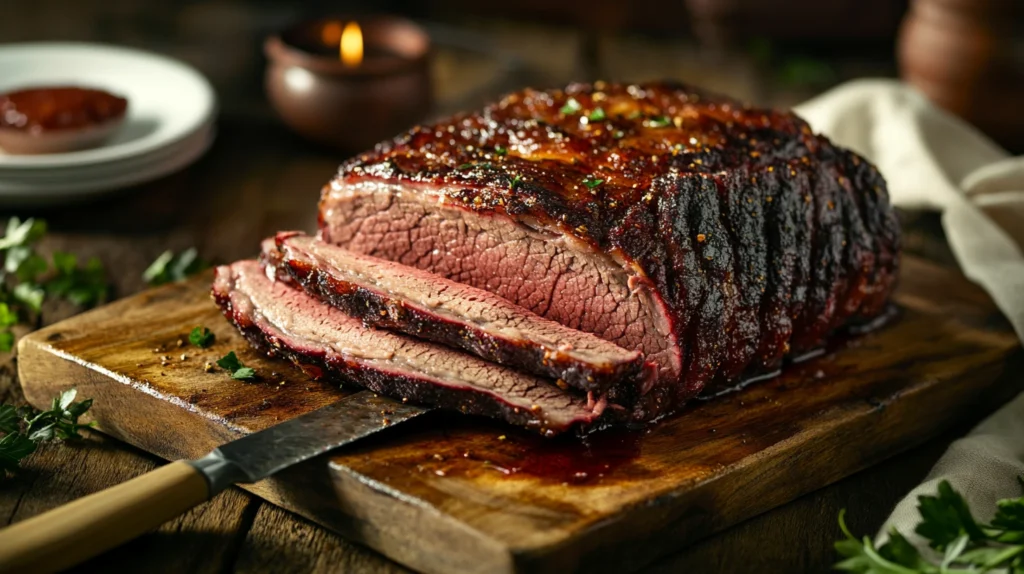
Roasting the Perfect Cabbage, Carrots, and Potatoes
Now that the corned beef is baked to perfection, it’s time to prepare the vegetables. Instead of boiling them, roasting brings out their natural sweetness, enhances texture, and adds a delicious caramelized flavor.
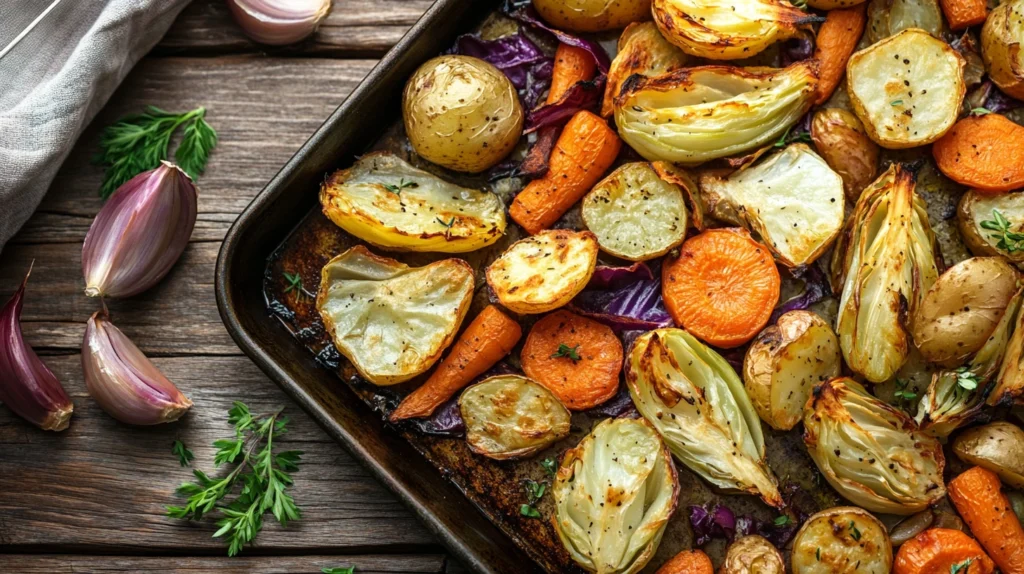
Why Roast Instead of Boil?
Better Texture – Roasting keeps the vegetables tender yet slightly crisp, unlike boiling, which can make them mushy.
More Flavor – The natural sugars in carrots, cabbage, and potatoes caramelize in the oven, adding a rich, slightly sweet taste.
Less Water Retention – Boiled vegetables can become waterlogged and bland, while roasting intensifies their flavor.
Step-by-Step Guide to Roasting Vegetables
Prepping the Vegetables
1️⃣ Cabbage: Cut 1 small head of green cabbage into thick wedges (about 4-6 pieces). This keeps them from falling apart while roasting.
2️⃣ Carrots: Peel 4 medium carrots and cut them into large chunks or thick strips.
3️⃣ Potatoes: If using baby potatoes, leave them whole or cut them in half. If using Yukon Gold or Russet, quarter them for even cooking.
4️⃣ Onions: Slice 1 large onion into thick wedges. These will add an extra layer of sweetness when roasted.
💡 Pro Tip: If you like a hint of smokiness, sprinkle ¼ tsp smoked paprika over the vegetables.
Roasting the Vegetables
1️⃣ Preheat the oven to 400°F (200°C) while seasoning the veggies.
2️⃣ Line a baking sheet with parchment paper or foil for easy cleanup.
3️⃣ Arrange the vegetables in a single layer on the baking sheet, ensuring they aren’t overcrowded (this helps them roast instead of steam).
4️⃣ Roast for 30-40 minutes, flipping halfway through.
Potatoes and carrots take longer to cook, so they should go in the oven 10 minutes before the cabbage.
Cabbage roasts faster (about 20-25 minutes) and should be added later to prevent overcooking.
💡 Pro Tip: If you prefer extra crispy edges, broil the vegetables for 2-3 minutes at the end of roasting.
Serving the Roasted Vegetables
Once the vegetables are golden brown and tender, remove them from the oven and serve alongside the sliced corned beef. Drizzle some of the corned beef pan juices over the veggies for extra flavor.
Pairing Suggestion: Serve with a dollop of horseradish sauce or grainy mustard for an extra zing!
Expert Tips, Common Mistakes, and Delicious Variations
Now that you have perfectly baked corned beef and roasted vegetables, let’s take your dish to the next level with pro cooking tips, common mistakes to avoid, and creative variations to suit different tastes.
Expert Tips for the Best Baked Corned Beef and Cabbage
Low and Slow is Key – Baking at 325°F (163°C) ensures the meat becomes tender without drying out.
Wrap in Foil for Moisture – Keeping the brisket wrapped while baking locks in juices, making the meat soft and flavorful.
Let it Rest Before Slicing – Resting for 10-15 minutes allows the juices to redistribute, keeping the meat juicy.
Slice Against the Grain – Cutting perpendicular to the muscle fibers ensures the meat stays tender and isn’t chewy.
Roast Instead of Boil – Roasting the cabbage, potatoes, and carrots enhances their natural sweetness and texture.
Common Mistakes to Avoid
Skipping the Rinse Step – Corned beef comes in a salty brine. If you don’t rinse it under cold water, it may be too salty after baking.
Not Adding Liquid to the Roasting Pan – Even though it’s wrapped in foil, a bit of broth or water in the pan creates steam, keeping the meat extra moist.
Cooking at Too High a Temperature – If the oven is too hot (above 350°F/175°C), the meat may become dry and tough.
Not Checking for Doneness Properly – The best way to know it’s done is by checking the internal temperature (195-205°F / 90-96°C for tenderness).
Overcooking the Cabbage – Adding the cabbage too early can make it mushy; instead, roast it separately for the best texture.
Creative Variations to Try
Want to put a unique spin on your baked corned beef and cabbage? Try these delicious variations:
1. Glazed Baked Corned Beef (For a Sweet and Savory Twist 🍯)
Instead of just using mustard and brown sugar, try a glaze:
¼ cup honey or maple syrup
2 tbsp Dijon mustard
1 tbsp apple cider vinegar
How to Use It:
- Brush the glaze onto the corned beef during the last 30 minutes of baking for a caramelized crust.
2. Slow-Baked Corned Beef (Ultra Tender) 🍖
If you have extra time, bake the corned beef at an even lower temperature (275°F / 135°C) for 4-5 hours.
This creates super tender meat that falls apart easily.
Wrap tightly in parchment paper AND foil for extra moisture retention.
3. Spicy Corned Beef and Cabbage 🌶
Love bold flavors? Add some heat to your corned beef:
½ tsp smoked paprika
¼ tsp cayenne pepper
½ tsp crushed red pepper flakes
How to Use It:
- Rub these spices on the meat before baking for a spicy kick.
- Toss the roasted cabbage in a drizzle of hot sauce before serving.
4. Garlic Herb Butter Corned Beef 🧄🌿
For a rich, herb-infused version, try this garlic butter finish:
3 tbsp melted butter
2 cloves garlic, minced
1 tsp fresh parsley, chopped
1 tsp fresh thyme or rosemary
How to Use It:
- Brush the garlic butter over the sliced corned beef right before serving for extra richness.
5. Smoked Corned Beef (BBQ Style) 🔥
If you have a smoker, try cooking corned beef low and slow over hickory or cherry wood.
Smoke at 250°F (120°C) for about 6 hours until fork-tender.
Brush with BBQ sauce in the last hour for a smoky, caramelized finish.
How to Store, Reheat, and Serve Baked Corned Beef and Cabbage
If you have leftovers (lucky you! 😋), storing and reheating them properly will ensure your corned beef stays juicy and flavorful, and your veggies remain delicious. In this final section, we’ll cover storage tips, reheating methods, and creative ways to enjoy leftovers.
How to Store Leftover Corned Beef and Cabbage
Refrigerating Leftovers
Corned Beef: Wrap tightly in foil or plastic wrap and store in an airtight container for up to 4 days in the fridge.
Roasted Vegetables: Store separately in a container to prevent them from becoming soggy.
💡 Pro Tip: To keep corned beef extra moist, store it with some pan juices in the container.
Freezing Leftovers
Corned Beef: Slice and store in a freezer-safe bag with a little broth to prevent drying out. It will last up to 3 months.
Cabbage & Vegetables: Freezing is not ideal as they may become mushy when thawed.
💡 How to Thaw: If frozen, thaw corned beef overnight in the fridge before reheating.
Best Ways to Reheat Corned Beef and Cabbage
1. Reheating in the Oven (Best for Moisture Retention) 🍽
Preheat oven to 300°F (150°C).
Wrap sliced corned beef in foil with a little beef broth or pan juices.
Heat for 10-15 minutes until warm.
💡 Why This Works: The slow, gentle heat prevents drying out and keeps the beef juicy.
2. Reheating on the Stovetop (Quick Method) 🔥
Place slices of corned beef in a skillet with a little broth.
Heat over medium-low for 3-5 minutes, flipping occasionally.
Cover with a lid to trap steam for extra moisture.
💡 Great for small portions!
3. Reheating in the Microwave (Fastest Option) ⚡
Place corned beef slices on a microwave-safe plate.
Cover with a damp paper towel to retain moisture.
Heat on 50% power for 30-second intervals until warmed through.
💡 Microwave Tip: Use lower power to avoid drying out the meat.
Creative Ways to Use Leftover Corned Beef
1. Corned Beef Hash & Eggs 🍳
Chop leftover corned beef and sauté with diced potatoes, onions, and bell peppers.
Fry until crispy, then top with a sunny-side-up egg!
2. Reuben Sandwich 🥪 (Classic Deli Favorite!)
Layer corned beef, Swiss cheese, sauerkraut, and Thousand Island dressing on rye bread.
Grill until golden and cheesy perfection.
3. Corned Beef Tacos 🌮 (Fun Twist!)
Warm corn tortillas and fill with shredded corned beef.
Top with pickled cabbage, spicy mustard, and a drizzle of sour cream.
4. Corned Beef Mac & Cheese 🧀
Mix shredded corned beef into creamy mac and cheese for an Irish-American comfort food delight.
5. Irish Corned Beef Soup 🍲
✔ Add leftover corned beef to a pot of broth with carrots, potatoes, and cabbage for a flavorful soup.
Baking instead of boiling the corned beef locks in flavor while keeping it moist. Pairing it with Beef Barley Soup makes for a hearty meal, especially on a cold day. If you love rich, beefy dishes, you might also enjoy Smoked Prime Rib for a special occasion.
For more classic comfort food, check out Mac and Cheese Meatloaf Casserole—another baked dish that delivers big flavor and warm nostalgia.
Enjoy your Baked Corned Beef and Cabbage, and let us know how it turns out! 🍀
Frequently Asked Questions
1. Can I cook my corned beef in the oven?
Yes! Baking corned beef in the oven is one of the best ways to cook it because it allows for better flavor development and a delicious caramelized crust. Instead of boiling away the seasoning, baking locks in moisture and enhances the taste. Wrapping the corned beef in foil and cooking it at 325°F (163°C) for about 2½ to 3 hours ensures a tender, juicy result.
💡 Pro Tip: Adding a bit of broth or water in the baking dish helps create steam and keeps the meat from drying out.
2. Is corned beef better boiled or baked?
While both methods are popular, baking corned beef generally provides better texture and flavor.
- Boiling Method: This is the traditional way of cooking corned beef, often done with cabbage, carrots, and potatoes in the same pot. While it keeps the meat moist, it can sometimes make it bland or overly soft.
- Baking Method: Baking creates a deeper, richer flavor with a slightly crispy exterior. Wrapping the corned beef in foil while baking traps moisture, resulting in a tender texture without being mushy.
💡 Best of Both Worlds? Some people like to boil it first for an hour to remove excess salt, then bake it for extra flavor and texture.
3. What is the most tender way to cook corned beef?
The key to tender corned beef is low and slow cooking. The two best methods for maximum tenderness are:
✔ Oven Baking (Slow Method) – Bake at 275°F (135°C) for 4-5 hours, wrapping it in foil with a little broth. This slow-roasting method breaks down tough fibers, making the meat melt-in-your-mouth tender.
✔ Slow Cooker Method – Place corned beef in a slow cooker with broth, seasonings, and a splash of vinegar. Cook on low for 8-10 hours for a fall-apart texture.
💡 Pro Tip: Always slice against the grain for the most tender bites!
4. What happens if you don’t rinse corned beef before cooking?
Not rinsing corned beef can make it too salty. Corned beef is cured in a brine, which contains a lot of salt and preservatives. If you skip the rinsing step:
🚫 Your corned beef may taste overly salty after cooking.
🚫 The broth or cooking liquid can become excessively salty, affecting the vegetables.
💡 How to Fix It: Simply rinse the corned beef under cold water for about 30 seconds before cooking. This removes excess salt without washing away the flavor.
Conclusion
Baking corned beef instead of boiling enhances flavor, creates a caramelized crust, and keeps the meat tender. By roasting the vegetables instead of boiling them, you get better texture and richer taste.
This guide has covered everything from choosing the best brisket to cooking, storing, and repurposing leftovers. Now you’re ready to make the best baked corned beef and cabbage for any occasion! 🍀✨
Enjoy your meal and happy cooking! 😊
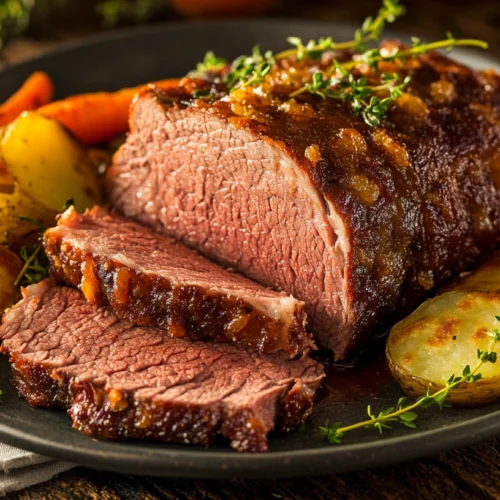
Baked Corned Beef and Cabbage – Tender, Juicy, and Flavor-Packed
Equipment
- ✔ Roasting Pan or Baking Dish – For baking the corned beef
- ✔ Heavy-Duty Aluminum Foil – Helps seal in moisture
- ✔ Baking Sheet – For roasting the vegetables
- ✔ Sharp Knife – For slicing against the grain
- ✔ Meat Thermometer – Ensures perfect doneness
- ✔ Mixing Bowl – For seasoning the vegetables
Ingredients
- For the Corned Beef:
- 1 3-4 lb corned beef brisket (flat or point cut)
- 2 tbsp Dijon mustard or whole-grain mustard
- 2 tbsp brown sugar
- 1 tsp black pepper
- ½ cup beef broth or water
- 1 tbsp apple cider vinegar optional, for extra tenderness
- For the Vegetables:
- 1 small head green cabbage cut into wedges
- 4 medium carrots peeled and cut into large chunks
- 6-8 baby potatoes or 3 large potatoes quartered
- 1 large onion cut into wedges
- 2 tbsp olive oil
- ½ tsp salt
- ½ tsp black pepper
- ½ tsp garlic powder
- ½ tsp dried thyme or rosemary optional
Instructions
- Step 1: Prepare the Corned Beef
- Preheat the oven to 325°F (163°C).
- Remove the corned beef from its packaging and rinse under cold water to remove excess brine. Pat dry with paper towels.
- Place the corned beef, fat side up, on a large sheet of aluminum foil in a roasting pan.
- In a small bowl, mix Dijon mustard, brown sugar, and black pepper. Spread evenly over the brisket.
- Wrap the corned beef tightly in foil, creating a sealed packet. Pour beef broth and vinegar (if using) into the bottom of the pan.
- Bake for 2½ to 3 hours (about 50 minutes per pound), until fork tender.
- Step 2: Roast the Vegetables
- About 45 minutes before the corned beef is done, preheat the oven to 400°F (200°C).
- In a large bowl, toss cabbage wedges, carrots, potatoes, and onions with olive oil, salt, pepper, garlic powder, and thyme.
- Spread the vegetables on a baking sheet in a single layer.
- Roast for 30-40 minutes, flipping halfway through, until golden brown and fork-tender.
- Step 3: Slice and Serve
- Remove the corned beef from the oven and let it rest for 10-15 minutes before slicing.
- Slice against the grain into thin strips for maximum tenderness.
- Serve alongside the roasted cabbage, carrots, and potatoes.
- Optional: Drizzle some of the pan juices over the meat and vegetables for extra flavor.
Notes
✔ If you prefer a glaze, brush the brisket with a mixture of honey, mustard, and brown sugar during the last 30 minutes of baking.
✔ Leftovers can be stored in the fridge for up to 4 days or frozen for up to 3 months.
